ASUS at Computex 2016: The 10 Years of the Republic Of Gamers (ROG) Booth Tour
by Ian Cutress on June 22, 2016 8:00 AM EST
For anyone following our Live Blog coverage at Computex this year, ASUS had two large press events in quick succession in different parts of town. The first focused on the mobile lineup of launches, in an event called Zenvolution (playing off of the Zen line of products) where Jonney Shih played rapid fire with the new Zenbook 3, Transformer 3/Pro 3, ZenFone 3 devices, and a $599 home assistant robot called Zenbo. A few hours later, over the other side of town, was the annual Republic of Gamers event held in a local nightclub where Jonney Shih presented a sequence of 10th-anniversary products. The following day we made a bee-line to the show floor booth before the official opening time and went through a number of the major releases.
Marking 10 Years of ROG
We reported back in January and CES that ASUS was celebrating ten years of the Republic of Gamers brand, marking a now noticeably profitable success for the company and a very well-known fixture for users looking at gaming branded products. At the time, we headed up a round-table with two of AnandTech’s most recent former Senior Motherboard Editors (who both now work at ASUS) to go into detail about why ROG exists, what it means for users, and I also put to them a dozen or so questions from our readers.
However at the time, CES was a relatively minor show for ASUS: as a company, it was decided to cancel the intended press events and make Computex a little more special, as anything announced at CES would have launched after Computex anyway. That led the way for Computex being the primary focus for the announcements this year, not only for the Zen product line of smartphones and notebooks, but also for the Republic of Gamers. We saw the announcement of a mix of 10 Year anniversary products, prototypes, and updates over previous generations of products. ASUS also wanted to make it special, and invited a series of ‘super fans’ to the show as well as a number of gaming teams that ASUS sponsors.
Among the super fans were a few overclockers, one of which is a former team member of mine in the most prominent overclocking leagues, as well as an ROG user who had acquired all (or almost all) of the ROG motherboards that have ever been released, with a total expenditure exceeding $10,000. He also had a few GPUs for good measure.
The ASUS ‘10 Years of ROG’ press event felt somewhat eerie: if someone in attendance had no idea of what ROG was, it felt almost like a cult leader of an army, and sure enough ASUS’ Chairman, Jonney Shih, came out in a knee length custom leather jacket, cap, and the title ‘ROG Commander-in-Chief’. Follow lots of low-frequency bass lines, a laser and smoke show, and technology reveals by ROG Generals, and you might not realize that this is actually just a product launch. When it has one, every brand enjoys a loyal following when users invest their money into that brand or product line, and it was clear that ASUS enjoys extrapolating the ideals of their following to a user army-like status.
Nonetheless, the product announcements were thick, fast, and lacking in just enough detail to force the press to crowd the limited samples on hand on display in the nightclub. At the time when the press event finished, Billy went for a stroll around the new products (as all the other media charged the demonstration area) while I closed up a few emails, but we waited until the following day and was able to browse the ASUS ROG Booth before the official opening time and before the mêlée of other press descended on what felt like the biggest booth at the show.
We saw a number of new products, and a big part of the show in general was the attention to detail by users who modify cases (or modders for short) that companies commission special show builds for. ASUS had a number of these on display as well, ranging from elegant to crazy. This includes custom system-integrator and retailer designed systems, such as the newest tri-loop cooled 8Pack designed system claiming to be the fastest overclocked system you can buy in the world. We interviewed 8Pack at an OverclockersUK event a couple of years ago, which you can read here.
So, in no particular order…


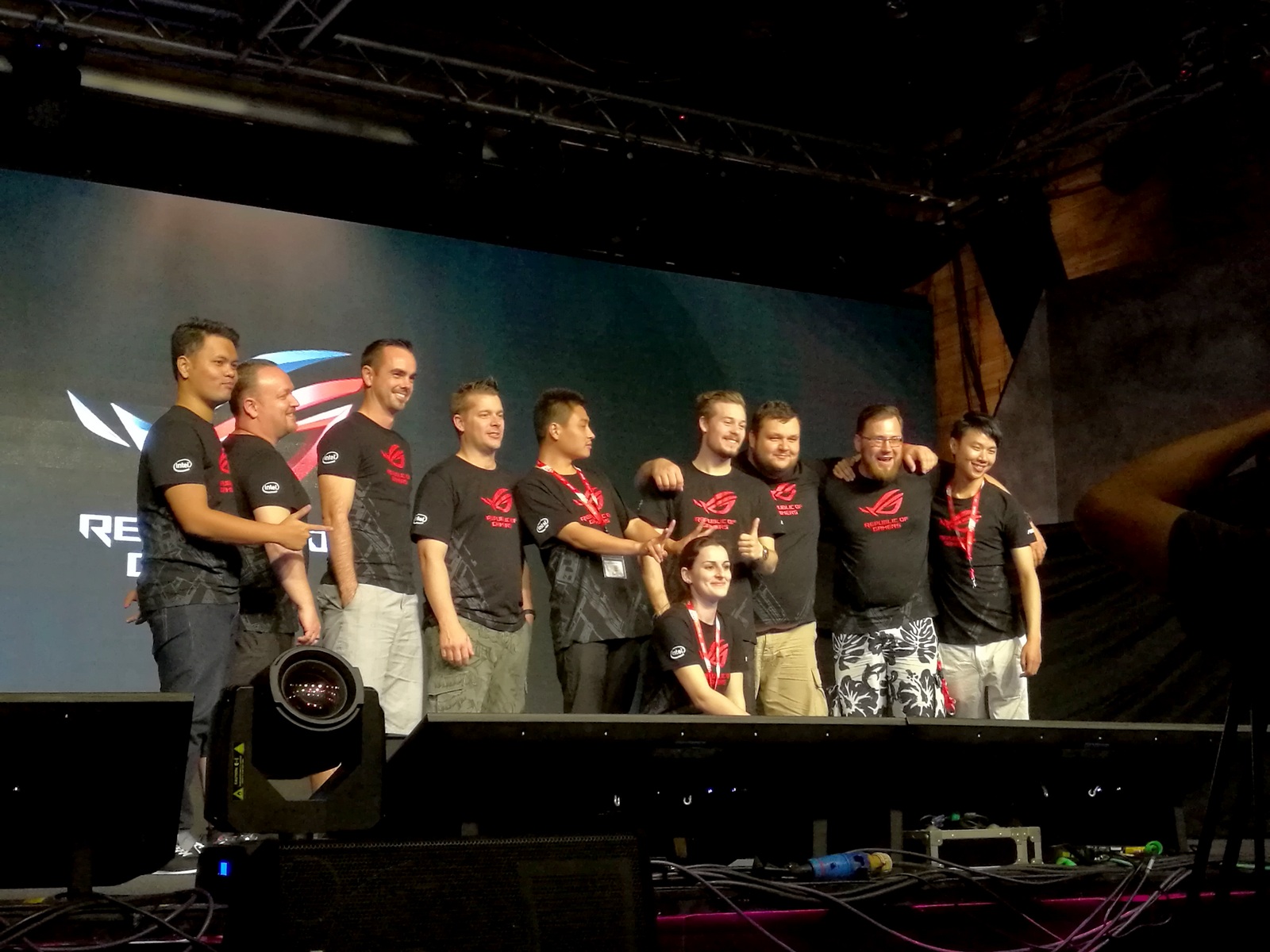
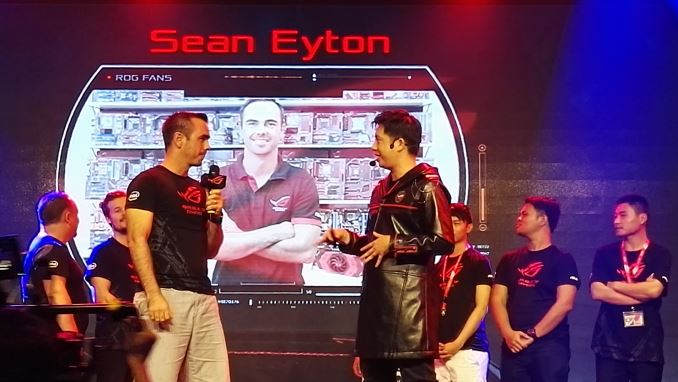
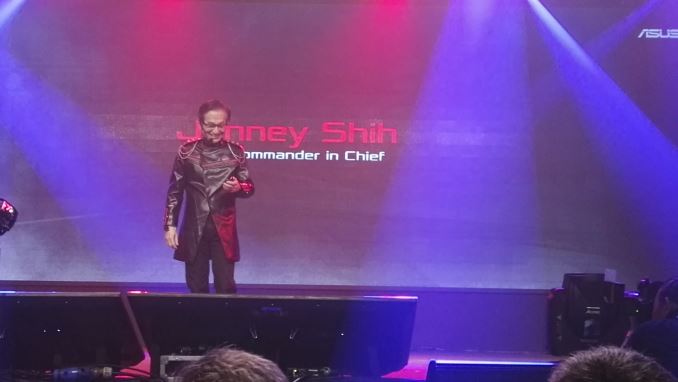
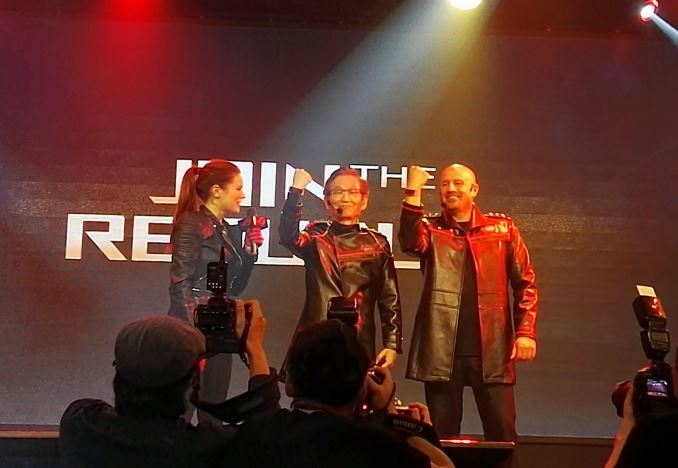
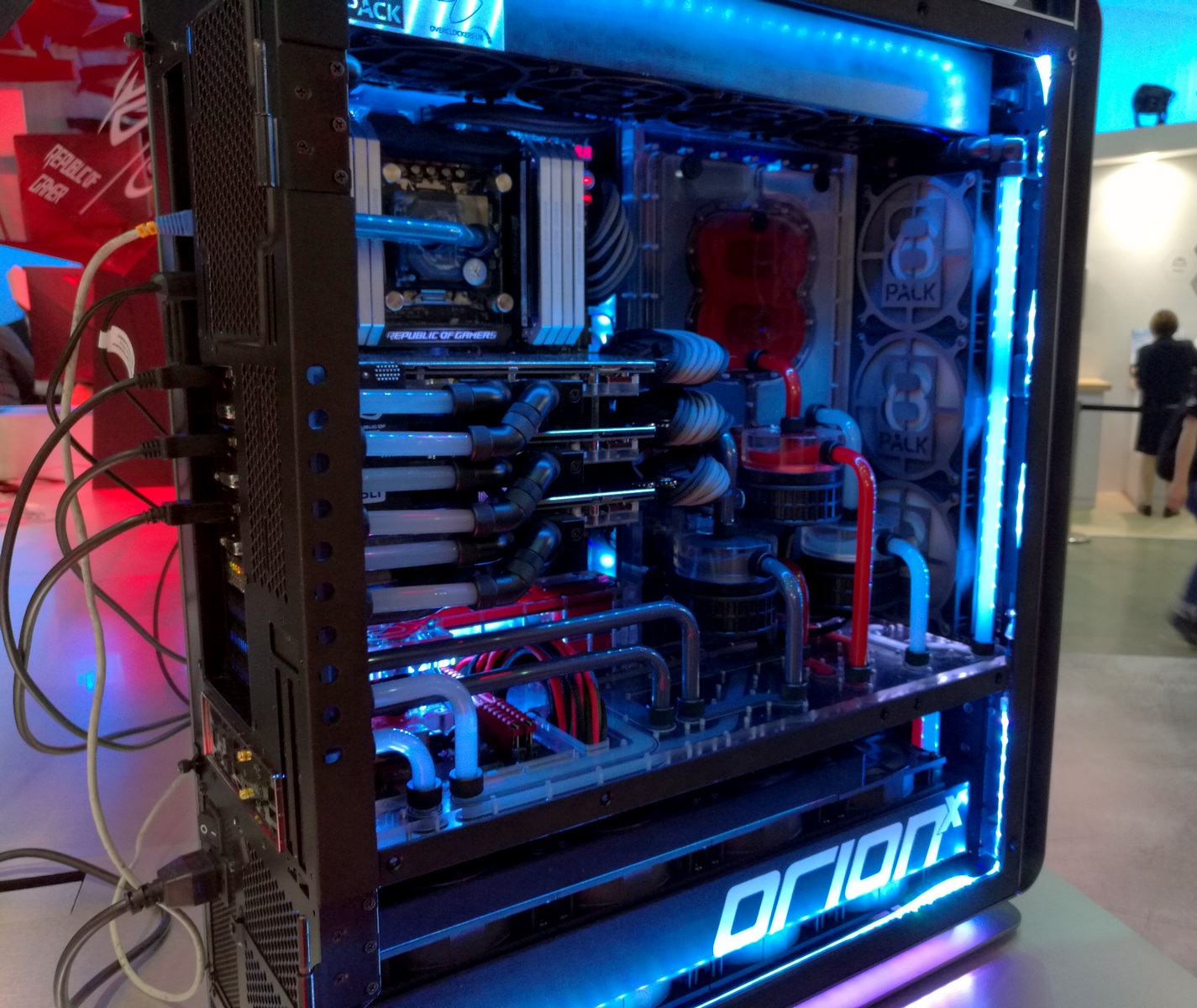









43 Comments
View All Comments
alphasquadron - Wednesday, June 22, 2016 - link
I used to think that too. I would think that the market for young kids who can afford such huge expensive machines would be quite small as it would it would compose of rich people and not middle class which is much larger market. But as companies make more crazy led shiny cases and even have ram modules that have lights and crap on them, I want to say that either they are just dumb and don't know how to sell stuff or that they have much more real live market data then I do and that these things actually are a good thing to make. I could never see it but maybe these things do provide a good revenue source for the company.Gastec - Wednesday, August 31, 2016 - link
I'm not sure that's the fact in North America. Not since the 15-30 years of age group queued for miles and waited for days to buy $500-600 iPhones.hechacker1 - Wednesday, June 22, 2016 - link
I went with another ATX case because I wanted a silent build, which includes AIO radiators for when you are actually using a Broadwell-E at 100%, along with powerful GPU. They can dump out a lot of heat.Right now my 6800k is using 45w at idle with a 4.3GHz overclock. That's according to the motherboard sensor on the Strix x99 Gaming that was mentioned in this article.
So while 45w isn't that much and can easily be handled by a HSF, at full tilt it's rated for 140w TDP (probably less because the 6800k is cut down).
Anyways, that's to say since I do VR with it, SLI really isn't a factor today and I use a single GPU. What ATX does allow is future further expansion via add in cards, and great and silent cooling. My whole rig has fans that are less than <1000 rpm at all times, and so it's almost always silent.
Bragabondio - Wednesday, June 22, 2016 - link
Nice rig heckhacker! Nowadays the components are getting more power efficient so I am planning on downgrading from 650W power supply to 550W one. As for silent build I am pretty sure I could make my rig as silent as I need it in mATX case (I am ready to go with minimum overclock to keep the noise down). In the eternal dilemma between firepower and mobility I prefer mobility (within a reason).BrokenCrayons - Thursday, June 23, 2016 - link
I'm continuing to use an ATX case for cooling, but the motherboard inside it is mATX since I finished my most recent upgrade. I briefly considered grabbing a smaller case, but it seemed like a waste of $30 to pick one up when there's nothing wrong with the old Lian Li tower on wheels from 2008 aside from the fact that it's got more space than I need right now.milkod2001 - Thursday, June 23, 2016 - link
Because it might be much easier to design full atx LGA 2011-v3 motherboard with all features enabled than micro/mini atx variant. I don't see that as a big issue though. You don't have to get monster case for that. Just get the smallest decent case for full atx mobo and have it sitting under table. Or don't go for LGA 2011-v3 get something simpler if you don't need all features if offers.fanofanand - Wednesday, June 22, 2016 - link
Nice work Ian, thanks for the info!madwolfa - Wednesday, June 22, 2016 - link
What's up with leather jackets?BrokenCrayons - Wednesday, June 22, 2016 - link
It's probably just attire the company's employees believe will appeal to people within their target market.iamkyle - Wednesday, June 22, 2016 - link
Of course, the x99 Edition 10 board doesn't come with 10GbE. But still commands the price premium.Looks like ASUS is all about money instead of delivering actual value.